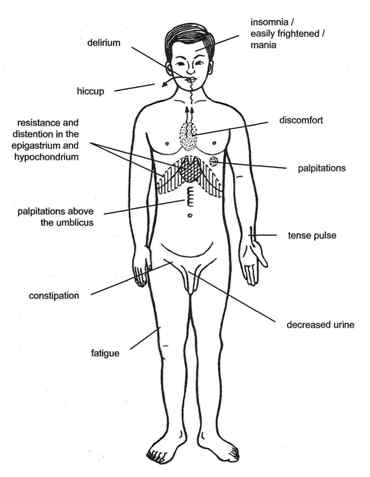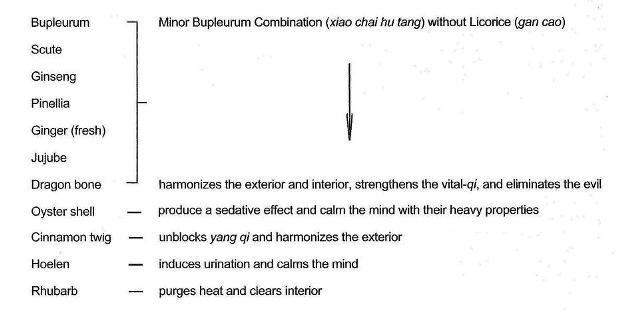Commonly Used Chinese Herb Formulas with Illustrations - Bupleurum and Mu Li Combination (Chai Hu Jia Long Gu Mu Li Tang)
0903 柴胡加龍骨牡蠣湯 (Chai Hu Jia Long Gu Mu Li Tang)
Bupleurum & Mu Li Combination
Bupleurum plus Dragon Bone and Oyster Shell Decoction
【Formulation】
|
Chinese Name |
Pharmaceutical Name |
Pin Yin Name |
English Name |
|
柴胡 |
Radix Bupleuri |
Chai Hu |
|
|
龍骨 |
Os Draconis |
Long Gu |
|
|
生薑 |
Rhizoma Zingiberis recens |
Sheng Jiang |
|
|
人參 |
Radix Ginseng |
Ren Shen |
|
|
茯苓 |
Poria |
Fu Ling |
|
|
黃芩 |
Radix Scutellariae |
Huang Qin |
|
|
牡蠣 |
Concha Ostreae |
Mu Li |
|
|
桂枝 |
Ramulus Cinnamomi |
Gui Zhi |
|
|
制半夏 |
Rhizoma Pinelliae praeparatum |
Zhi Ban Xia |
|
|
大黃 |
Rhizoma Rhei |
Da Huang |
|
|
大棗 |
Fructus Jujubae |
Da Zao |
【Classic Literature Reference】
Shang Han Lun (Treatise on Febrile Diseases, 206).
Compiler: Zhang, Zhong-jingo
【Indications】
Traditional: The complication of shaoyang disease marked by fullness in the chest, irritability, palpitation, delirious speech, emotional instability, nervousness, fatigue, urinary difficulty, a sensation of heaviness throughout the body that cause motor dysfunction, and constipation; mania an convulsions may occur in severe cases.
Modern: Neurasthenia, hysteria, epilepsy depression, attention-deficit syndrome, menopausal syndrome, melancholia, neurotic palpitation, hypertension, arthrosclerosis, hyperthyroidism, insomnia, valvular disease, angina pectoris, and hemiplegia.

Complication of Shaoyang Disease
【Herbs and Actions】

Join our member to get full-text article! Join Free!
【Pharmacological Studies】for members only
【Clinical Applications】for members only
【References】for members only